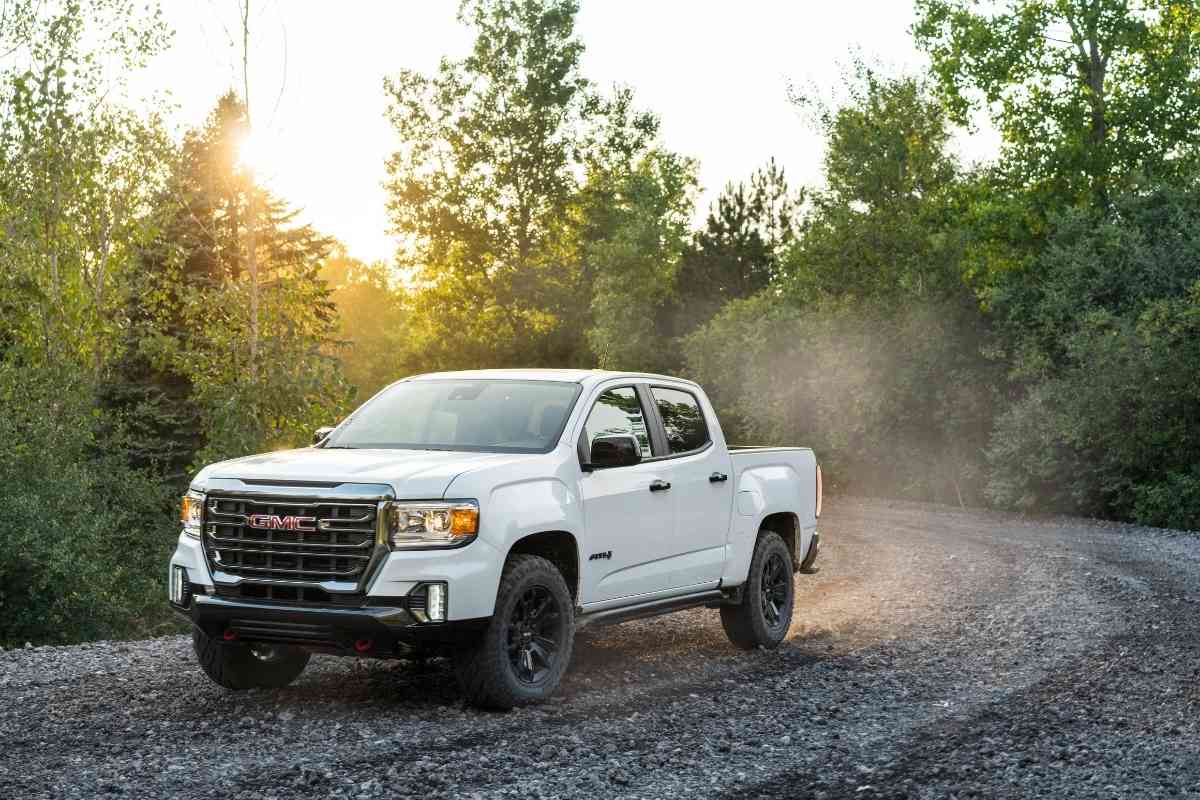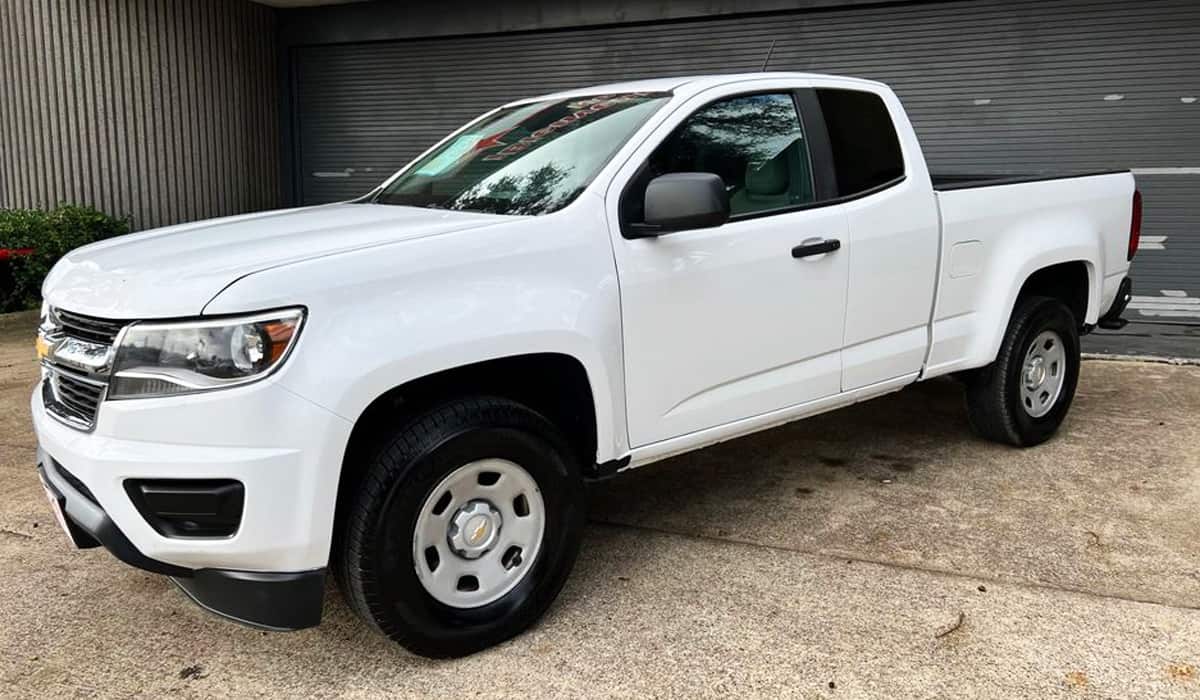Does The GMC Canyon Have a Timing Belt or Chain? The Answer Might Surprise You!
The GMC Canyon is one of the most popular midsize trucks.
This truck joins other trucks, such as the Toyota Tacoma, Ford Ranger, Honda Ridgeline, and its twin, the Chevrolet Colorado.
Together, these trucks make the midsize truck segment vibrant.

If you want a big towing capacity in a midsize truck, the Canyon might be a great choice.
Under the hood, most GMC vehicles have a timing chain. But what does the Canyon have?
Does The GMC Canyon Have a Timing Belt or Chain?
Most GMC Canyon models have a timing chain instead of a timing belt. Some models between 2012 and 2017 have a timing belt while others have a chain.
If you have timing chains, they will last for a long time. If you have belts, they operate more smoothly and quietly.
Whether your Canyon has a belt or a chain, you need to take care of it to ensure the engine runs right.
If yours has a belt, you will not need much maintenance, but you may have to replace it at 60,000 miles or earlier.
For models with a chain system, you will need to keep the system oiled and then remove any metal shavings that may appear in the engine oil.
Read on to learn more about timing belts.
What is a Timing Belt and How Does it Work?
So, does the GMC Canyon have a timing belt or chain? Only a few models of the GMC Canyon have a timing belt.
All the others have a timing chain.
The belt has the same function as a timing chain, but instead of being made of metal, it is a rubber ring that harmonizes the movements of the crankshaft and camshaft.
The rubber ring has teeth, and it may be reinforced with strong material inside.
Your timing belt will last between 60,000 miles and 90,000 miles.
You should not wait for the belt to break down but replace it as recommended by the manufacturer.
If you wait for the belt to break, your engine might stop automatically.
You may first hear several noises coming from the engine and then the engine might stop.
The engine might also experience misfires, reduced performance, and reduced fuel efficiency.
After using the belt for many years, it might wear out or break, or it might stretch and jump position.
This is why you need to replace the engine as recommended by the manufacturer.
How Do Mechanics Replace the Timing Belt?
Unlike the timing chain, which sits deep in the engine, the timing belt is easily accessible.
It will be covered to protect it from debris, but you can get to it with more ease than you would the timing chain.
To replace the belt, mechanics will switch off the engine and disconnect the ground cable for the battery.
Once the engine cools, they will remove the crankshaft pulley and then remove all other accessories that may hinder the accessibility of the timing belt.
The mechanic will remove the cover for the timing belt and lock the camshafts as necessary.
Note the position of the camshaft timing marks for easy replacement.
The mechanic will remove the tensioners for the timing belt and the idler pulleys and then yank off the timing belt.
You might want to replace the water pump and your vehicle’s cooling system before replacing the belt.
Again, if you can only access the thermostat with the water pump, you may need to replace the thermostat too.
Installing the new timing belt involves the same steps above, but is now performed in reverse.
The mechanic needs to ensure that the camshaft and crankshaft are in alignment once you set the tensioner.
After installation, the mechanic will turn the crankshaft by hand to ensure it is in the correct position on the timing marks.
From there, you can test your vehicle to see how well it rolls.

What is a Timing Chain and How Does it Work?
Now that we’ve answered the question “does the GMC Canyon have a timing belt or chain?“, let’s find out why they are important.
Timing chains are great when you need a long-lasting solution for your engine.
Most chains can last the life of your engine, and you only replace them when replacing the engine.
You can have the timing chain for more than 150,000 miles, which is a long time.
You, however, need to keep it maintained to ensure that it is oiled at all times and doesn’t skip gears.
If the timing chain skips, your engine timing will be out of sync.
This means that the spark plugs, valves, and pistons do not work at the same time.
When the timing is off, the engine may show signs, such as misfiring and reduced performance.
The timing chain is located deep in the engine. As long as the engine is well oiled, your chain will be okay.
So, a part of understanding the answer to “does the GMC Canyon have a timing belt or chain?” is also knowing how long your car will last.
This chain needs to be replaced proactively as you may not access it for inspection during routine maintenance schedules.
If the chain, which looks like a bicycle or motorbike chain, breaks, the engine loses the connection between the camshaft and the crankshaft, and that is why the engine stops functioning completely.
Replacing a timing belt is not cheap.
Although the cost of the chain may only be a few hundred dollars, the labor costs might push the cost into thousands of dollars.
It is best to replace it when you need to replace the engine to lower the costs.
Timing Chain Pros and Cons
People ask “does the GMC Canyon have a timing belt or chain?” because they want durability. After all, timing chains are preferred for their longevity and strength.
Most people replace vehicles before they need to replace the chain.
If you drive vehicles for less than 10 years, you may never need to replace the chain unless you drive more than 1,500 miles every year.
The material that makes a timing chain is resistant to temperature changes and other conditions within the engine.
You may need to check it after driving for more than 100,000 miles, but that may be the only maintenance you need for the chain.
This is unlike the belt, which you need to replace after driving for about 60,000 miles. That’s why many people ask “does the GMC Canyon have a timing belt or chain?“
However, even if it lasts longer, the timing chain offers a less smooth rotation, which causes the vehicle to use more fuel.
Again, chains make more noise than belts, and thanks to their weight, they only equip large cylinders like those of a truck.
If your timing chain breaks, you will need more money to replace it than you would with a timing belt.
You have to keep the chain lubricated to ensure it doesn’t make much noise and doesn’t chip off.
What Else Is Under The GMC Canyon Hood?
The Canyon is like a Chevrolet Colorado with additional comfort features. So, the question “does the GMC Canyon have a timing belt or chain?” also applies to the Colorado.
Its grille looks better, the wheels fancier, and the interior more comfortable, but the engines and most of the other performance specs are the same.
You will pay more for a Canyon than you will for a Colorado, but you will feel the comfort of the vehicle when you start driving.
The Denali trim is the top-of-the-range trim, which offers all the creature comforts you can have in a truck.
If you want power in a midsize truck, the Colorado will be the most cost-effective.
The Canyon comes standard in two-seat and four-seat extended cab.
It is also available in the Crew cab configuration that seats five.
There are two available bed lengths and a choice of six trims.
The base SL trim sports a 2.5L engine that makes 200 hp and 191 pound-feet of torque. It mates with a six-speed automatic transmission.
This trim doesn’t have rear seats, and you can only have it in the Extended-cab configuration.
Some of the standard features in this trim include:
- Air conditioning
- 7-inch touchscreen
- Apple CarPlay
- Android Auto
- 2 USB Ports
If you want a work truck, this base SL will give you that.
Upgrading the SL is the base Canyon that is available as an extended cab and crew cab.
It draws power from a 3.6L V6 engine that generates 308 hp and 275 pound-feet of torque.
The engine pairs with an eight-speed automatic transmission.
The base Canyon gets several features not available for the base SL, including cruise control, remote keyless entry, and a remote locking tailgate.
The SLE is the next trim that offers better interior materials for added comfort.
It also offers a Wi-Fi hotspot and an eight-inch touchscreen.
The SLE draws power from a 2.8L four-cylinder engine that makes 181 hp and 369 pound-feet of torque.
There are several optional driver and safety aids, such as lane departure warning and forward collision warning, available for the SLE.
All-Terrain is an off-road designed trim that offers the power of the V6 engine, off-road tires, rear locking differential, and reinforced suspension among others.
The SLT has an upmarket interior with leather upholstery and wireless phone charging among others.
Top of the range there is the Denali, which has all the advanced features and comfort features for long trips.
It offers a navigation system, advanced sound system, and standard driver aids.
Closing Thoughts On does the GMC Canyon have a timing belt or chain?
If you want a truck interior more comfortable than what the Chevy Colorado offers, you can go for the GMC Canyon. It is more comfortable, and it looks more stylish on the road.
So, it’s common for people to ask “Does the GMC Canyon have a timing belt or chain?“
This Canyon has a timing chain under its hood, but a few models might have a timing belt.
